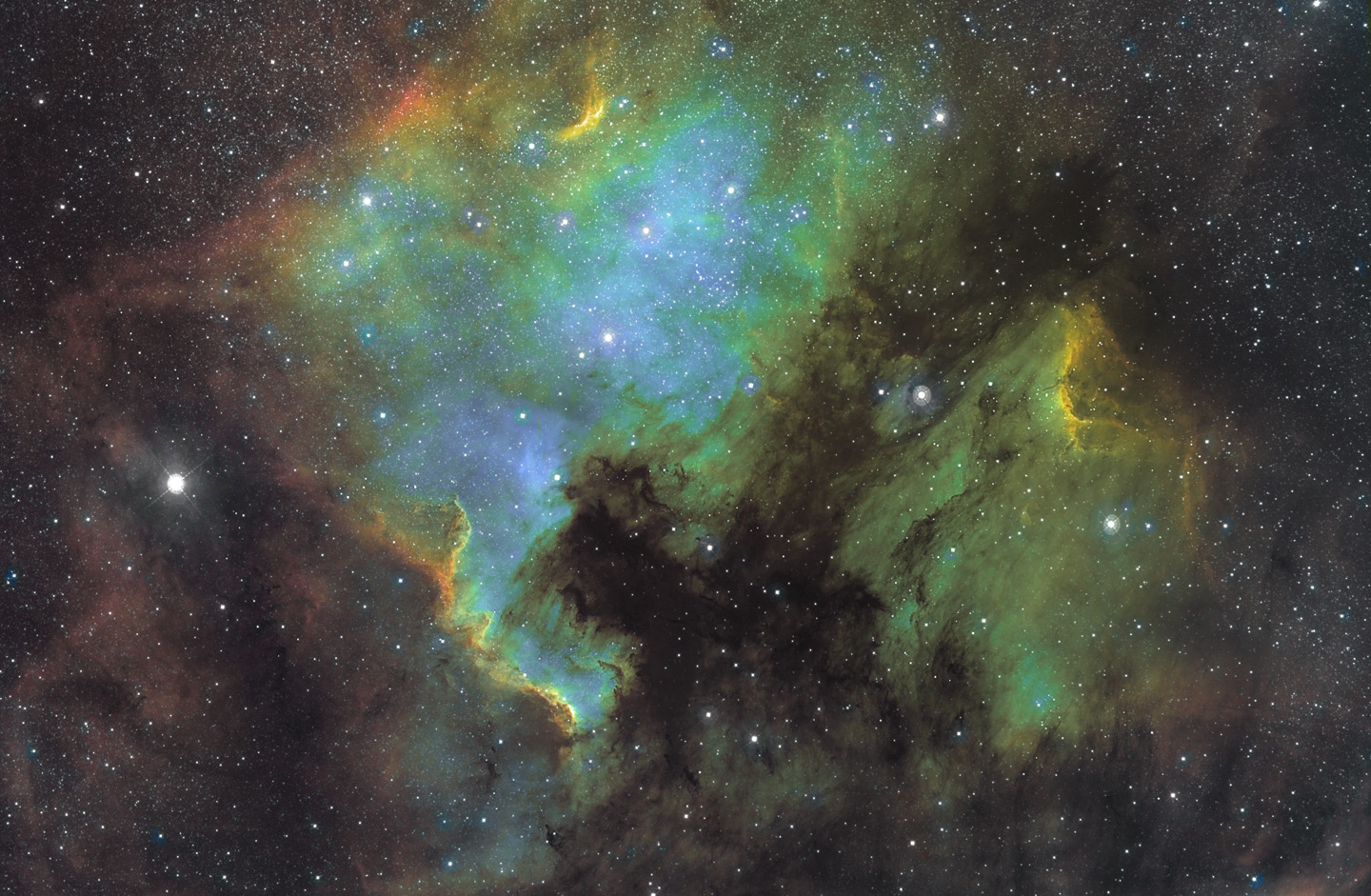NGC 7000, the North America Nebula, is located in the constellation of Cygnus. It is a very large area of emission nebulosity extending some 2.5 degrees to the east of Deneb. The ‘NAN’ is well named for its shape – which is easily recognizeable as resembling the continent of North America. It was discovered in the early 1890s during experiments into wide field astrophotography. Several areas of nebulosity can be seen surrounding NGC 7000 including IC 5070, the Pelican Nebula to the west and IC 5068 to the south. The ‘Skull Nebula’ can also be seen between the North America and the Pelican nebulae.
The Pelican Nebula (also known as IC 5070) is an HII region associated with the North America Nebula. The nebula resembles a pelican in shape, hence the name. The Pelican Nebula is divided from its brighter, larger neighbor, the North America Nebula, by a molecular cloud filled with dark dust. This nebula is much studied because it has a particularly active mix of star formation and evolving gas clouds. The light from young energetic stars is slowly transforming cold gas to hot and causing an ionization front gradually to advance outward. Particularly dense filaments of cold gas are seen to still remain. Millions of years from now this nebula might no longer be known as the Pelican, as the balance and placement of stars and gas will leave something that appears completely different.
Optics/mount: 180 Epsilon f2,8 Takahashi Alt-5
Camera/filters: Atik 11002 Astromik Ha S-II O-III
exposure: 10×600″ ha 6×600 S-II O-III
